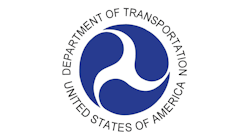USDOT awards $7 million to SMART for new bicycle and pedestrian pathway segment
The Sonoma-Marin Area Rail Transit (SMART) has been awarded a $7 million grant through the U.S. Department of Transportation's Safe Streets and Roads for All (SS4A) program. This funding will support the completion of a segment of the SMART Pathway, a Class I multiuse facility that enhances mobility for bicyclists and pedestrians throughout Sonoma and Marin counties.
“With funding now in hand to match the state of California’s $6 million investment, construction will start summer of 2025 to close a large gap in the [Great Redwood Trail ] from Santa Rosa to the Sonoma County Airport,” said California Senate Pro Tempore Mike McGuire. “SMART has already kicked off construction of critical trail segments earlier this year. When all is said and done, a new 21-mile corridor of the world-class Great Redwood Trail will be complete in Sonoma County.”
The grant will fund the completion of the SMART Pathway segment from Santa Rosa, Calif., to the Sonoma County Airport, closing a 4.73-mile gap in the pathway network. Construction of this pathway segment completes 21 miles of the Class I multi-use pathway connecting communities from the town of Windsor to the city of Petaluma, Calif.
The SMART Pathway is the southern portion of the Great Redwood Trail, which provides first- and last-mile connections to SMART stations and offers a safe way to travel along the rail corridor, particularly in areas where the SMART Pathway is the shortest path of travel between communities. The pathway allows cyclists of all abilities to make local trips or longer journeys by bicycle or by bicycle in combination with the train.
“Making strategic federal investments into SMART is creating more value across the entire corridor and North Bay Area. As an example, being able to walk or bike on this pathway to get on a SMART train traveling to the Cotati station means students can attend Sonoma State University without having to buy a car,” said U.S. Rep. Mike Thompson (D-CA-4). “This regional connectivity means greater access to opportunity for all our communities.”
This project will bring on:
- Increased connectivity: The new segment will allow people to travel seamlessly between communities and SMART rail stations, providing an important link for commuters, students and recreational users alike.
- Access to opportunity: By providing a high-quality, protected route for walking and biking, the pathway will enhance access to jobs, schools, transit and recreational opportunities and promote a healthier, more sustainable lifestyle.
- Class I Multiuse Pathway: As a Class I facility, the pathway is completely separated from motor vehicle traffic, offering a dedicated space for pedestrians and bicyclists to travel safely and efficiently across the region.



